Pauline Boudry & Renate Lorenz
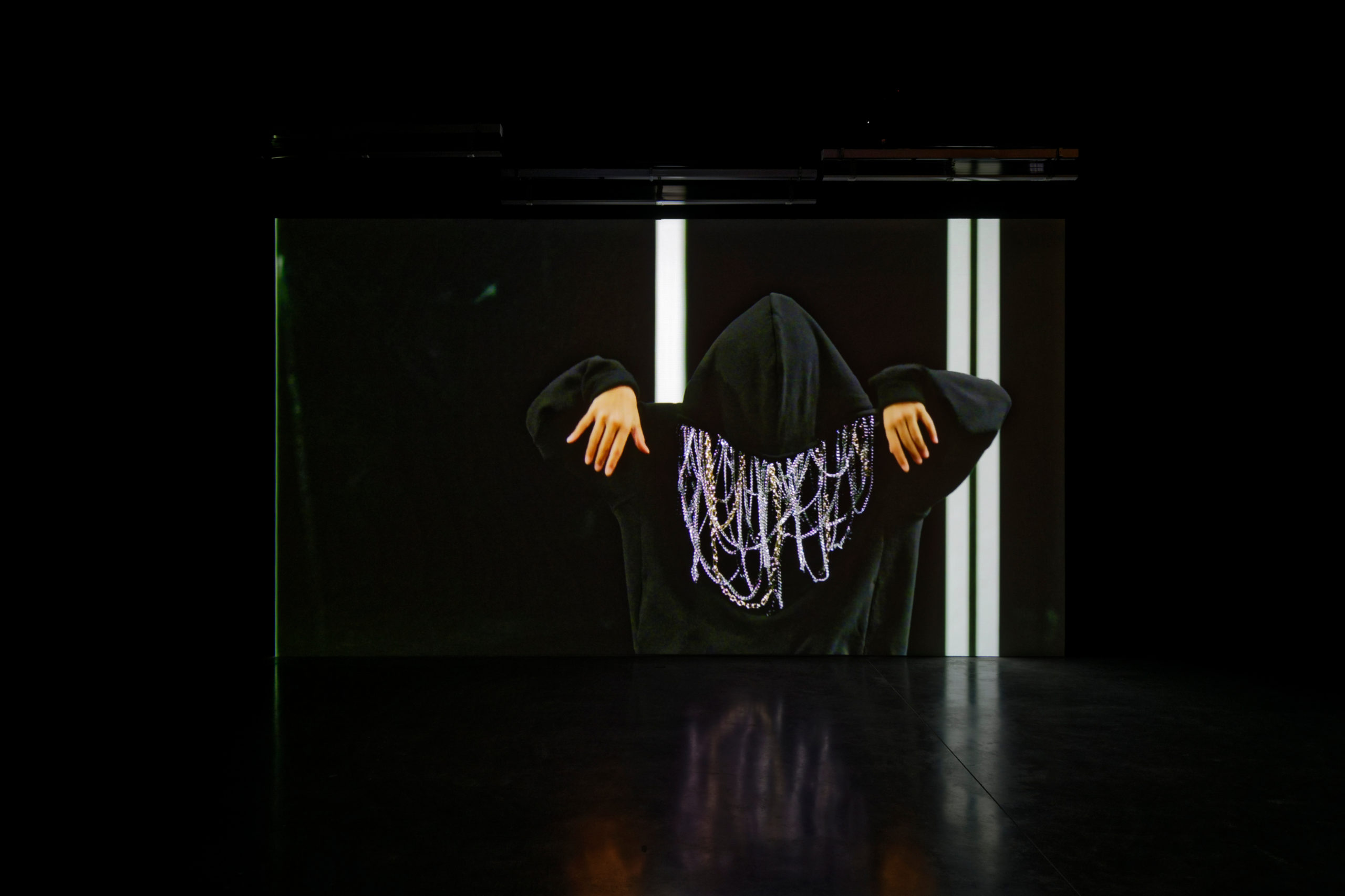
(No)Time
Frac Bretagne, Rennes, 12.02-19.09.2021
Pauline Boudry (1972, Lausanne) and Renate Lorenz (1963, Bonn) form a variable-size duo, often broadened by a troupe of faithful performers from one project to another. Based in Berlin, they have been elaborating since 2017 what they call a “queer archaeology”, which consists in delving into the film and photographic archives of “drag” figures from the last two centuries, which were usually erased by history. Their works depict forgotten moments of utopia. This process of superimposing images, which they refer to as a “temporal travesty”, pushes eras and protagonists to overlap as each performer is able to take on several identities, according to the strategy of the prism or of the mirror ball.
Starting with their first art installations, Boudry & Lorenz have revisited medical essays from the 19th century that used to codify sexual order and its deviance.1 In Normal Work (2007), the performer Werner Hirsch, who regularly collaborates with them on their projects, re-enacts four poses inspired by the portraits and photographic self-portraits of Hannah Cullwick. She was a maid in Victorian England, who posed as a housekeeper, but also as a peasant, a bourgeois and as a black slave. The diary of this historical figure and the letters she wrote to her London employer reveal the sadomasochistic nature of their relationship. With N.O. Body (2008), deviance turns to the freak, to the circus animal. For this piece, the performer stands in front of the portrait of Annie Jones, the famous bearded woman of the Belle Époque. She was first identified and classified in the archives of Doctor Magnus Hirschfeld, the founder of the Berlin Institute of Sexology. The Institute was later destroyed by the Nazis, and was the first to ever establish a visual atlas of sexualities in the 1920s. In this scenario, Werner Hirsch takes on the attitude of the circus artist, and thus swaps his stance from an object being analysed to that of the professor. By doing this, the performer reveals the power of projecting an image, closely tied to its function of controlling subversive identities. Starting in 2009, as they’ve been focusing on the biblical figure of Salome, -the embodiment of fatal beauty-, the visual artists have been opening up their artistic research to choreography (Salomania). Wu Tsang, a transgender artist with no specific training in this field, reinterprets the dance of the seven veils of the Jewish princess tasked with seducing her stepfather Herod, following the eponymous silent American film directed by the actress Alla Nazimova and Charles Bryant in 1923. The performer, with a face covered in soot, appears in front of a screen projecting the archive film and her shadow becomes the character’s double. Later on, she receives the live recording of the solo written by Yvonne Rainer for her first feature film, Lives of Performers (1972). Boudry & Lorenz thus position their work in the wake of Rainer’s thoughts and reflections on the relationship between the intimate and the political, the body and camera movement, and on the topic of “re-enactment”.
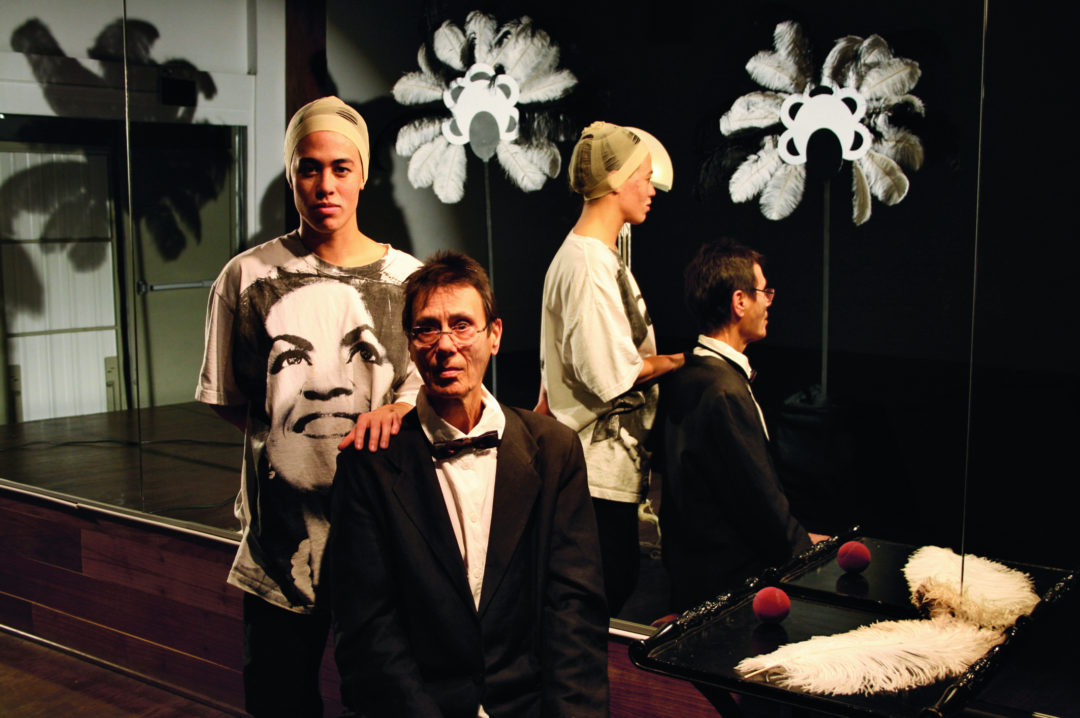
Boudry & Lorenz’s latest video installations Moving Backwards (2019) and (No)Time (2020), re-articulate the issues they started exploring thirteen years ago with greater lightness and increased fervour. While the discourse on gender and the didactic scope of the work are still present in the form of “statements” and theoretical essays that they write themselves or commission from critics, the setting and staging of the works are closer to that of perceptions and sensations, than to the political message. Produced for the Swiss Pavilion at the 58th Venice Biennale, Moving Backwards takes the act of moving in reverse as its leitmotif. Five performers alternate solo and duo walks, and group dances on reflective vinyl. Everything in this display is fascinating: the quality of the performers who have a background as much in post-modern dance as in hip-hop, giving new life and form to the moonwalk of break-dance, before coming to an astonishing unison; the sequined jackets and trousers; the sound effects of the rattling and rubbing of steps; the slow motion and inverted edits that lead to an extension of time close to a floating bones feeling, following the bewitching rhythms of house music. Right from the very start, the camera follows the steps of the New York artist Marbles Jumbo Radio, wearing shoes with inverted tips. This display and setting are emphasized when a performer in ghostly drapery walks across the stage in high-heeled boots with two ends that reflect off the dance floor; thus constituting a blurring of perception and an uncanny feeling of strangeness. The presence of the choreographer Latifa Laâbissi as a night bird with an expressive smile and an elastic body offers the necessary cohesion to bring the piece together. On several occasions, the glittery curtains make the shot disappear, just like the real curtains in the pavilion that seem to draw themselves by enchantment. Hiding the screen, this mechanism materialises the idea of the “fourth wall”, separating the audience from the performers. However, here, the audience finds itself on the stage where the performance was filmed, and they entered through the backstage area before leaving through the bar of the nightclub. This process reversal, -of the performers and audience, of the image of the performers on the dance floor, of the screening on the stage where the audience is-, aims at building awareness on the indeterminacy of roles in the context of the performance, but also regarding the fluctuation of identities. Even if this artistic process does not allow to turn the audience into performers, contrarily to what artists regularly hope for,2 it takes up the staging effects and features developed by Dan Graham who, in Performer/Audience/Mirror (1975), would comment on his own attitude before describing that of the audience, first with his back to a large mirror reflecting the audience, and then facing it. This logic and effect of distancing can be linked to the work of Boudry & Lorenz who, following the theatre principles of Bertold Brecht, create strangeness and alienation, rather than identification, between the audience and the performers.
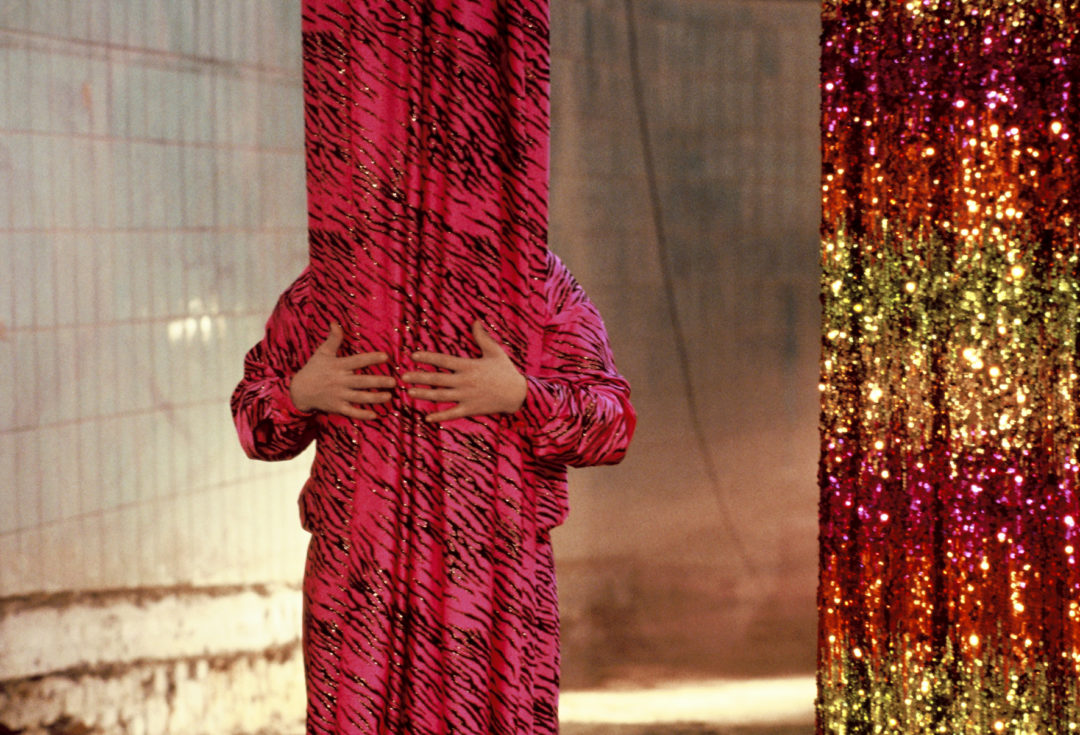
The idea of the curtain appeared in the joint work of the two visual artists on the occasion of their video installation Opaque (2014). In a disused swimming pool, a black curtain hides two representatives of an underground organisation, before opening onto a second pink curtain with zebra patterns, in which the performers disguise themselves. A thick smoke of the same colour conceals it all. When the performers appear, it is in order to deliver a speech inspired by the game of white masks worn by Black people in Jean Genet’s play Les Nègres (1958) and by the “right to opacity” advocated by Édouard Glissant.3 These different aspects, which challenge the space we occupy as authorized voyeurs, also aim at asserting the autonomy of the set, costumes and props. As such, at the end of Moving Backwards, the curtain comes to life in a form of mechanical ballet. Should it be the two-headed shoes, the hairy shoulder pads, the masks or the neon strobe lights that are activated at a precise moment; everything contributes to the autonomy and empowerment of the object, which thus becomes “the actor’s competitor,”4 according to the Polish playwright Tadeusz Kantor. Even more so, the possibility of making the set a fully-fledged actor of the work really ties Boudry & Lorenz’s concepts with the idea of the importance of what happens off-screen, as developed by the film critic André Bazin. If the frame of a painting separates the system of representation from its actual environment, the frame of the camera operates like a mobile shield. By fragmenting the space where the action takes place, the camera frame suggests the existence of something that is, imaginarily, beyond its borders.5 It is no coincidence that in Toxic (2012), the artists have the performer adopt and render the following statement by Jean Genet, said during his interview for the BBC in 1985: “I dreamt that the technicians of this little film revolted. Assisting with the preparation of a film, they never have the right to speak. Now why is that? And I thought they would be daring enough to chase me from my seat, to take my place. And yet they don’t move.”6 These characteristics can be found in the duo’s latest video installation (No)Time (2019), which was presented and co-produced by the Frac Bretagne.7 The work’s setting seeks to give the illusion that we, the viewers, had ended up backstage, and were watching improv. The curtain is here replaced by three automatic blinds flooded with radiant yellow light, while the flickering neon lights follow the events of the filmed action and are relegated to the next room: what is seen is always linked to another space to be discovered.
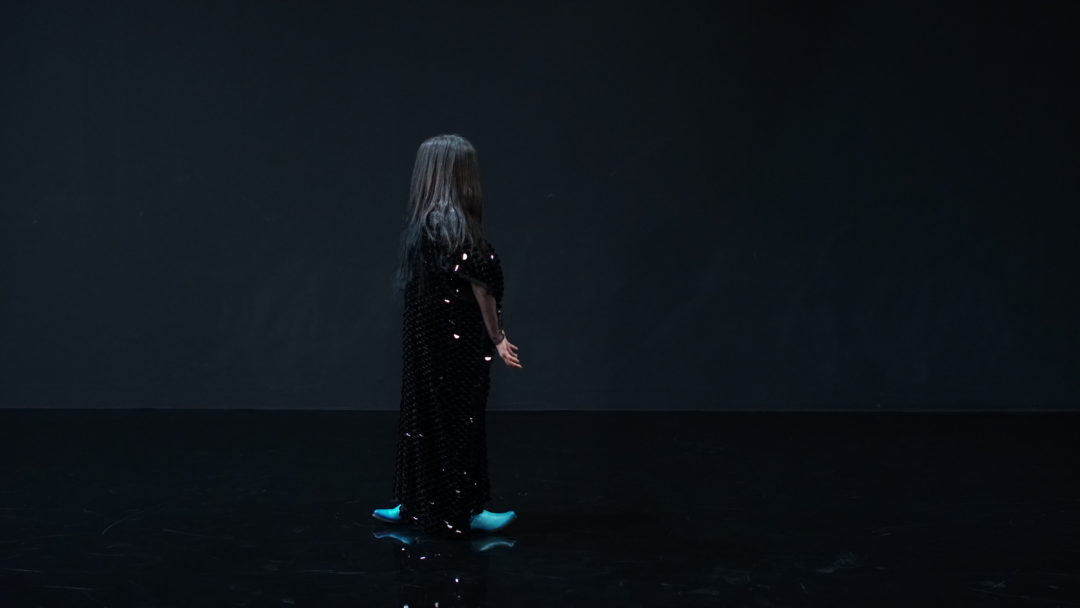
The script of this second part has been simplified, even systematised. Each dancer presents themselves in front of the audience after having walked through an automatic sliding door. They then showcase their solo; -inspired by classical dance, dance-hall, hip-hop or drag performance-, and then return to do improv with a partner, while ignoring the audience, as if free of the scopic drive.8 However, we are well and truly in front of a performance. The setting and staging even push the “show” aspect of the work towards that of consumption, as Dan Graham has previously demonstrated with his installations on monitors behind shop windows. The text written by the artists for the visitors and placed at the entrance of the exhibition, seeks to put this aspect into perspective, and even to push us into a feeling of communion with the performers: “When you enter the installation, an automatic sliding door leads you into a zone of dilation and suspense. Perhaps it is the door of late capitalism that brings you in, but chains you in at the same time (…). Or maybe, it is a door leading to a promised pleasure, yet that doesn’t always keep its promises. The door for ghosts. The door to escape. The door that could change you, as you are walking through it. The door between the backstage and the stage (…).” The aim of this preliminary statement, as it can been understood like a form of stage direction, is to contextualise the political scope of this artistic proposal (as the dilation of temporality versus neo-liberal, linear and accelerated time), and to highlight the interaction that is expected from the audience. The statement indicates “We invite you to take part in our dance experimentations.” However, it is rather unlikely that visitors will find particular pleasure in participating in this improvisation. On the one hand, the mechanisms and the setting expressed by the work keep us away from it, (unlike the effects of absorption that Michael Fried pinpointed in eighteenth-century painting)9; and on the other hand, the complicity between the dancers is not intended for visitors. The main purpose of the opening statement is rather to control how the work is to be interpreted. Indeed, the variety of interpretations seems less about asserting the freedom of the spectator than that of the author, who invests the scenographic structure with all these different meanings, “literally and in all the senses”, like Rimbaud used to say. This is also evidenced, rather quite impertinently, by Diderot in his novel Jacques The Fatalist and his Master (1778-1780), in which the untimely intervention of the narrator stresses the power balance with the reader, in the form of a provocative narrative pact.
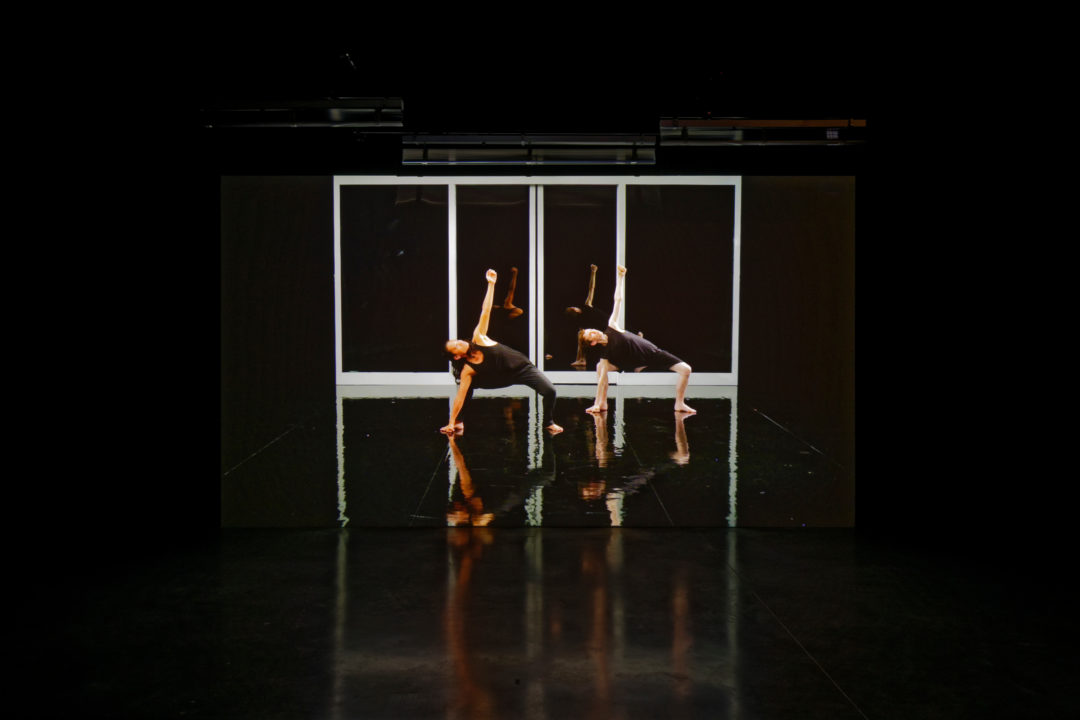
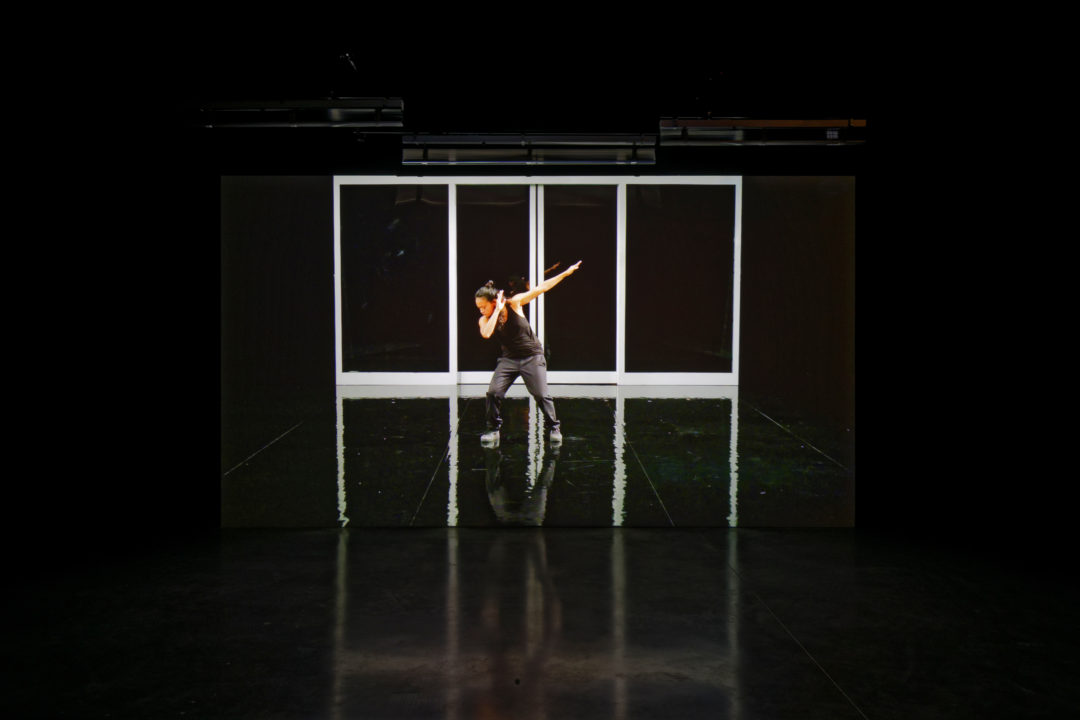
More fundamentally, in both projects, the performers disguise themselves with objects that take on the role of prosthetics: hairy shoulder pads that look like shamanic ornaments, and masks and tentacles of pearl necklaces. In Improvisation télépathique (2017), a filmed performance reinterpreting the 1974 score of the minimalist and electronic music composer Pauline Oliveros, four performers interact with the props and the set that surround them. With gravity, they take on postures induced by remote-controlled white pedestals and attempt to render their bodies equivalent to the inanimate objects found on stage. One can find smoke vapours, masks of tassels and of hair obliterate their identity already, even before the spotlights of the exhibition space go wild. In a cool, refrigerating aesthetic, close to that of the human-machine, the setting experiments with a paradoxical utopia: that of the cyborg, half-human, half-animal, ready to become invisible and undefined in order to resist persecution.10 Fiction then endorses the opposite view of that of the statement Carolee Schneeman’s made fifty years earlier.11 Her response was not trying to be queer, but was rather willing to explore from a female perspective topics of erotic imagery and the sensual, comic and liberating feeling of abandonment. Boudry & Lorenz’s goals are much more militant and demonstrative. Judith Butler has theorised gender performativity, namely the role that discourse plays in the construction of a heteronormative identity that passes itself of for innate.12 It is however here the transgender discourse that interests the two visual artists, for its capacity to reveal the trickery, to act as simulacrum; as copy of the masquerade. By giving drag fetishes a life of their own, the artists try to extricate them out from an alienating representation. The objects used by the films’ protagonists then become monumentalized. The sculptures presented in the antechamber of each and one of the installations put us face to face with their materiality, and thus, their strangeness. This can be seen with the panel of synthetic hair behind the bar of the Swiss pavilion (Kukeri II, 2019), the gold and silver chains hanging on the wall, or the fragments of the dance mat cut into geometric monochromes at the Frac Bretagne art centre (Wall Necklace Piece (I Know Where I Come From), 2020; Dancefloor Piece, 2020). Even though they may appear somewhat anecdotal in regards to the power of the videos, and are sold autonomously on the art market, these sculptures nevertheless crystallise the fascination for the “freak”; -when one sculpture transforms bling into an impediment to luxury, another one makes-over post-war abstract painting, whose “irruption of the physical body” feels and looks like a Cousin Itt. It is precisely this aspect of the work that Renate Lorenz has conceptualised and theorized in her essay Queer Art: A Freak Theory,13 by making the flaunted “monstrosity” of freak shows a tool used by the marginalized for overturning power, to the point of rendering it a method of “de-normalising” implemented by the visual arts. To quote Deleuze and Guattari, even a minority has to become minoritarian.14
In 2016, at the time of Donald Trump’s election in the United States, Boudry & Lorenz offered a dark and unsettling vision of political contestation. In the video installation Silent, the musician Aéra Negrot stands on a turning desk in the middle of Berlin’s Orianenplatz, where a refugee camp had previously settled from 2012 to 2014. Ten microphones are pointed at her, ready and set for a press conference, which never happens. The artist performs 4’33’’ by John Cage (1952). Her silent voice makes space for the interferences of the city, the lively noise of everyday life that a theatre stage would have normally concealed. Then suddenly, as she leaves her stage for a park bench, she starts to sing with her low bass, groovy diva voice.15 While public speech is abandoned in favour of the imperceptible, the artists seem to have turned dance into a strategy of resistance. Keeping up the rhythm, looking out late into the night, the grace that rises.
- Michel Foucault, Histoire de la sexualité, vol. 1, La volonté de savoir, Paris: Gallimard, 1976, 211 p.
- See the lecture given at the Rijksakademie, Amsterdam, on March 11th 2020, http://vimeo.com/410189830; and the artistic statement of Telepathic Improvisation (2017) which was presented at the Contemporary Arts Museum of Houston in 2017 and at the Swiss Cultural Centre of Paris the following year.
- “That is why I call for the right to opacity for everyone. I no longer have to “understand” the other, that is, to reduce him to the model of my own transparency, in order to live with this other or to build something with him,” Édouard Glissant, Introduction to a Poetics of Diversity (translated by Celia Britton), Liverpool: Liverpool University Press, 2020 (originally 1996), p. 45.
- “The object has ceased to be a stage prop, it has become the actor’s competitor”, Tadeusz Kantor, Leçons de Milan, Arles: Actes Sud, 1990, 89 p.
- André Bazin, Qu’est-ce que le cinéma ?, Paris: Éditions du Cerf, 2011, 372 p
- Nigel Williams, interview with Jean Genet, BBC, London, July1985.
- “(No)Time”, Frac Bretagne, Rennes, 12.02- 23.05.2021
- Visual pleasure felt in cinema in regards to the representation of women, from a male perspective, Laura Mulvey, “Visual Pleasure and Narrative Cinema”, in Screen, vol.16, n°3, London, autumn 1975.
- Michael Fried, Absorption and Theatricality. Painting and Beholder in the Age of Diderot, Berkeley-Los Angeles: University of California Press, 1980, 249 p.
- Donna Haraway, “A Cyborg Manifesto: Science, Technology and Socialist-Feminism in the 1980’s”, first published in Socialist Review, n°80, 1985.
- “I say that “I use materials” but often I feel like they rather use me as a vision from which they re-emerge in a visual world, which could not speak without them”, Carolee Schneemann, “From the Notebooks (1962-1963)”, More Than Meat Joy. Complete Performance and Selected Writings, New York: Documentext, 1979, p. 9-10.
- Judith Butler, Gender trouble, New York:Routledge, 1990, 172 p.
- Renate Lorenz, Queer Art: A Freak Theory, Bielefeld: Transcript, 2012
- The subject in a becoming is subject “(…) but only when it enters a becoming-minoritarian that rends it from its major identity”, Gilles Deleuze et Félix Guattari, A Thousand Plateaus, Capitalism and Schizophrenia (translated by Brian Massumi), Minnesota: University of Minnesota Press, p. 291.
- “Dear President, your profile is vague. You do not have arms, nor legs. No stomach, no sex and no head. Your enemy is your lover. I need make-up, undergarments and hormones! Dear visitor, are you optimist, when our country is at war? war? war?”
Image on top : Pauline Boudry & Renate Lorenz, (No)Time (capture/screen), 2020 © Pauline Boudry & Renate Lorenz. Vue de l’exposition / Exhibition view (No)Time, 12.02-23.05.2021, Frac Bretagne, Rennes, Crédit photo : Aurélien Mole
- From the issue: 96
- Share: ,
- By the same author: Teresa Margolles, Josephine Meckseper,
Related articles
Iván Argote
by Patrice Joly
Laurent Proux
by Guillaume Lasserre
Diego Bianchi
by Vanessa Morisset

